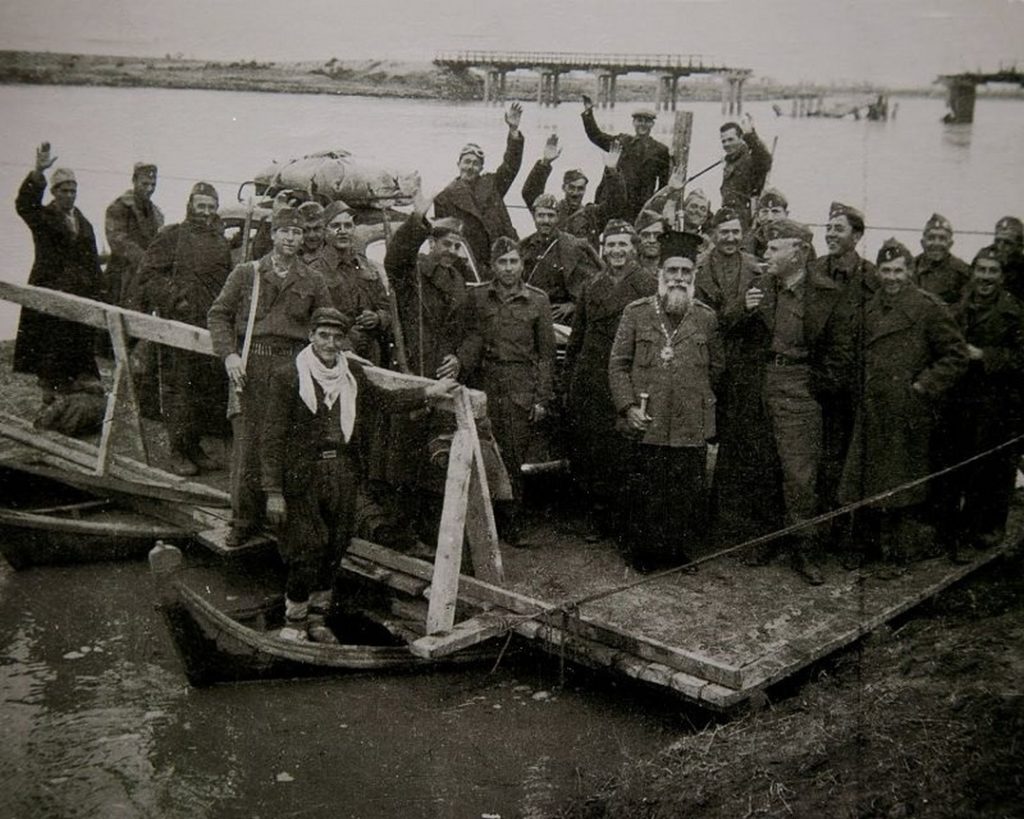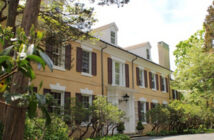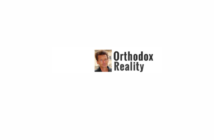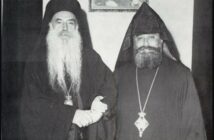Source: The National Herald
In the post-1922 period, the Greek church in the United States was divided along Venizelist and Royalist lines with the National Herald and Atlantis newspapers supporting the former and latter respectively. It should be noted that the National Herald reported on the movements of Metropolitan Joachim of Kozani during his visit to the United States, whereas the Atlantis overall remained silent. The Holy Synod of the Patriarchate had chosen Meletios as Ecumenical Patriarch, giving him jurisdiction over the Church in North America in early 1922 despite protests emanating from Athens. Joachim’s visit should be viewed in terms of the political divisions existing both in Greece and the United States, the imposition of immigration quotas by the U.S. Government, and the gradual assimilation of Greek immigrants into U.S. society. There was no future for Greek Americans to return to a Greece full of Asia Minor refugees, so many opted to remain permanently and became U.S. citizens.
At the end of 1923, Joachim traveled to the United States to meet with compatriot Kozanites, giving them a detailed account of the situation in Greece and also the events surrounding the Asia Minor catastrophe. His exact arrival date is unclear, but he visited his brother Anastasios, a tobacco merchant, in New York. Historians such as Tsounis, Dimopoulos, Aggelatos, and Apostolidis argue that his prime motive for visiting the United States was to advance in the ecclesiastical hierarchy. The United States was seen as an important destination with the newly created Archdiocese there, compared with staying in provincial Kozani, which had a large refugee population. Apparently, Joachim possessed a good understanding of the operation of the church in the United States. He was well connected with the Patriarchate in Constantinople and Patriarch Meletios, and he had even signed the document establishing the Archdiocese and the memorandum of the election of Alexander as its Archbishop in 1922.
In the United States, his appearances were selective, pre-planned, and shrouded in secrecy. Fokas Aggelatos claims that Joachim went to the United States to avoid publicity regarding some scandals published in the Salonika newspaper, Tachydromos in March-April 1924. The alleged scandals surrounding his personal life and even Joachim’s role in the replacement of seven councilors during the election of Meletios are attributed to him. The local Kozani press didn’t publish these articles against him, only the anti-Venizelist press did so.
On March 2, 1924, Joachim made his first public appearance in New York. He was joined by Archbishop Alexandros, many Greeks, and American officials who gathered to honor Dr. Esther Lovejoy for her charitable work dealing with the victims of Smyrna and the Asia Minor refugees. He gave a speech praising the efforts of the Greek army on the battlefield and emphasized that the time had come for Greek Americans to put aside their differences and divisions for the sake of unity.
Responding to an invitation of the Association of Kozanites ‘Kozani’ to attend their general meeting in New York. He praised them for their care and provision of their homeland, especially to establish public baths for health reasons, and stressed the need for its speedy completion. The baths were officially opened in 1930 and expatriates donated $6,000 for its completion. The Kozanites were so impressed with him that they invited him to the Atlas Restaurant on March 15 where he gave a rousing speech about how he escaped a death sentence from the Kemalists in 1923. His compatriots warmly responded to his speech.
Philadelphia was the next city visited. On March 29 he officiated at the Church of St. George and his sermon analyzed the parable of the paralytic to whom he likened the Greek nation, recommending national, ecclesiastical, and political unity as a means of avoiding the repetition of the destruction of Hellenism in Asia Minor and in the Balkans.
The founder of the National Herald, Petros Tatanis sent a telegram to Greek Premier, Alexandros Papanastasiou, on April 2 asking him to grant a three-month residence permit to Joachim because his stay in the United States was deemed necessary for resolving the ecclesiastical situation. Joachim was joined by the National Herald, which covered all his activities, in contrast with the pro-royalist organ, Atlantis which provided coverage to the Metropolitan of Chaldias, Vasilios, who was an admirer of Ioannis Metaxas, Venizelos’ rival. Vasilios arrived in the United States without permission in August 1923 and was later deposed in May 1924 when he created a schismatic church.
On May 11, 1924, Joachim visited Manchester, New Hampshire, addressing a gathering of Near East Relief to strengthen its fund-raising in favor of the orphans and refugees of Asia Minor. This event was published in the National Herald.
On May 15, however, the Synod convened, ordering Joachim to return before May 25 otherwise action would be taken against him. In a telegram from Alexander to the Synod on May 10, the former denounced Joachim for seeking to remain longer in the United States under the pretext of his encountering persistent pressure from the Near East Relief for cooperation. In reality, Joachim wished to remain and tour the parishes and Alexander didn’t want any further chaos in the Church in the United States.
The topic of the intention of Joachim’s departure appeared in the National Herald with the title, ‘Metropolitan of Kozani Departs for the Sake of the Pacification of Church Situation within the Week for Athens on May 25. Alexander would have been elated reading this article. It could be argued that Alexander may have considered Joachim a threat to his position of archbishop of the Orthodox Church in America. Upon his return to Athens, the anti-Venizelist newspaper, Tachydromos, published stories about Joachim that weren’t true.
Joachim could have remained in America if he wanted to. There were other high-ranking clergy who, when ordered to return, refused, and stayed in America. Joachim’s return was a result of his choice to finally return to continue as Metropolitan of Kozani. It should be noted that the Metropolitans of Corinth and Salonika, Damaskinos and Gennadios, didn’t see him as the cause or perpetrator of events that created problems in the church during Joachim’s sojourn in America.
In conclusion, Joachim was an ardent Venizelist whose mission to the United States could be viewed as both ecclesiastical and informational, given that he spoke about the refugee problem in Greece. He successfully avoided becoming embroiled in the existing political schism while seeking unity in the Greek-American community.




